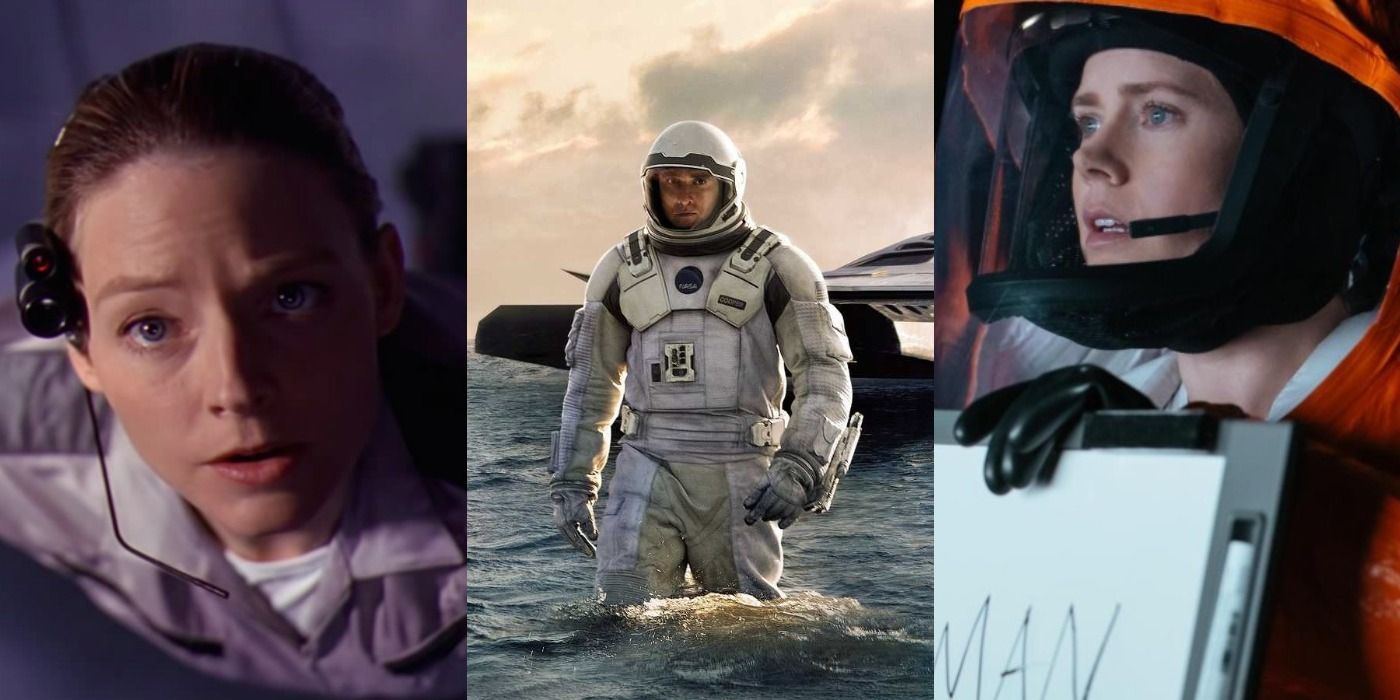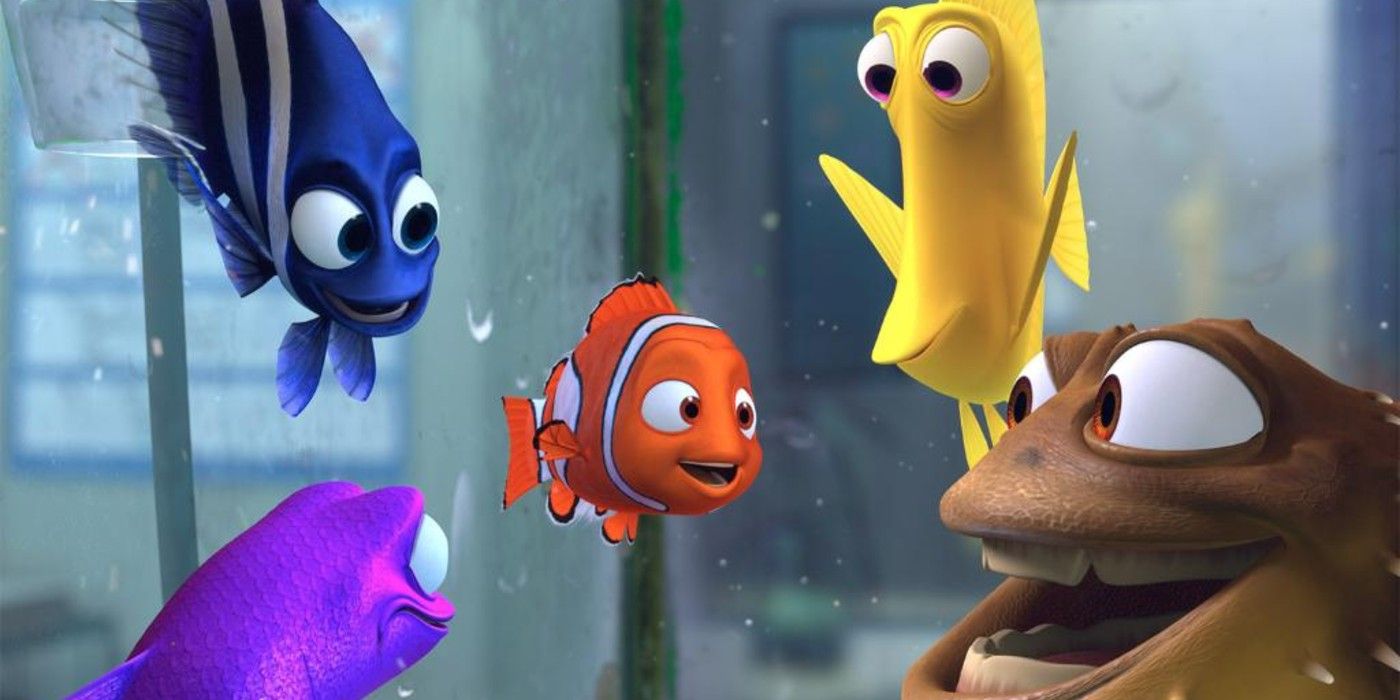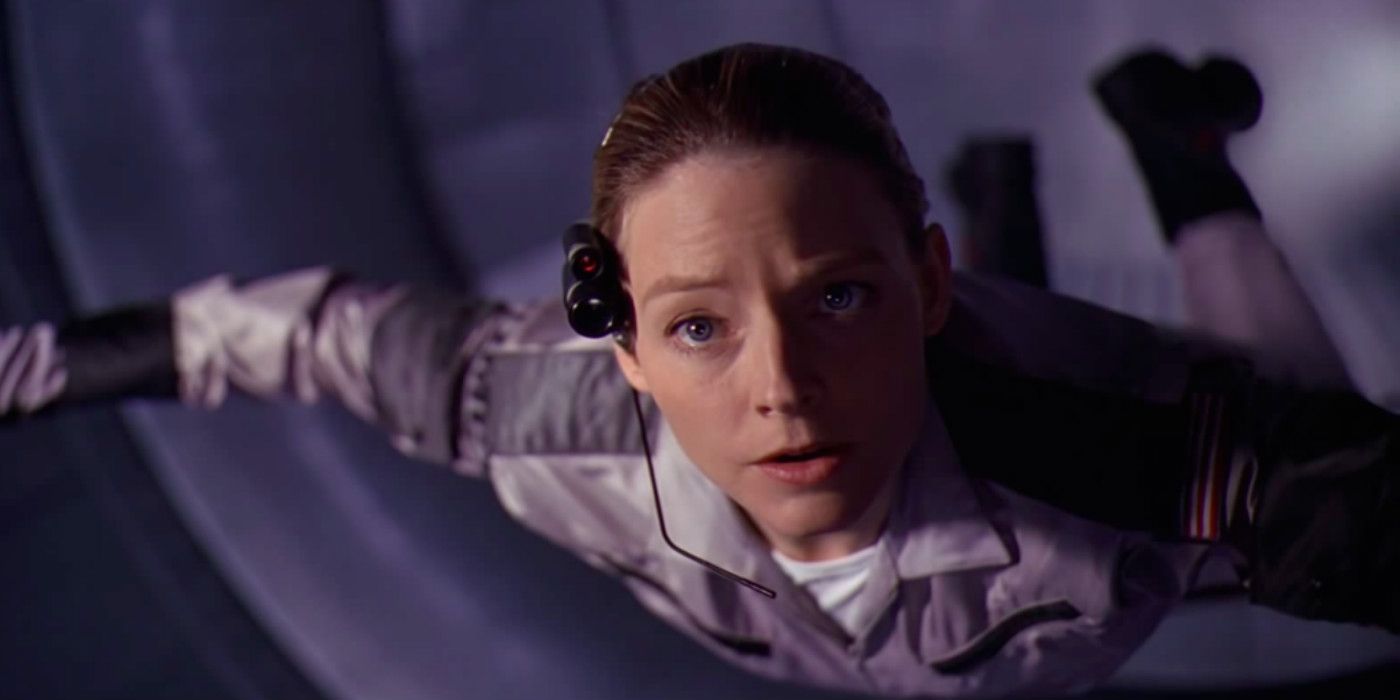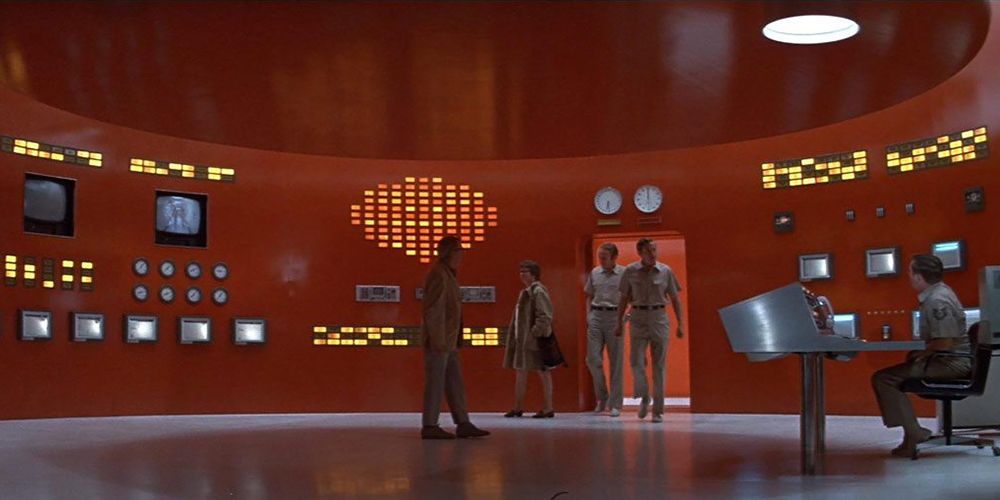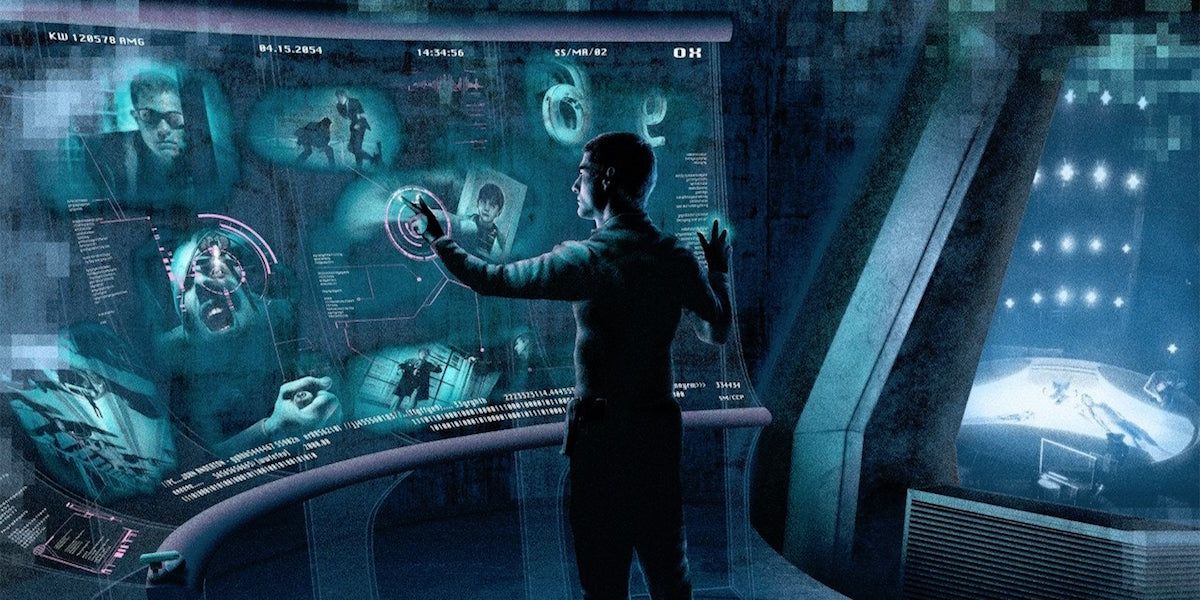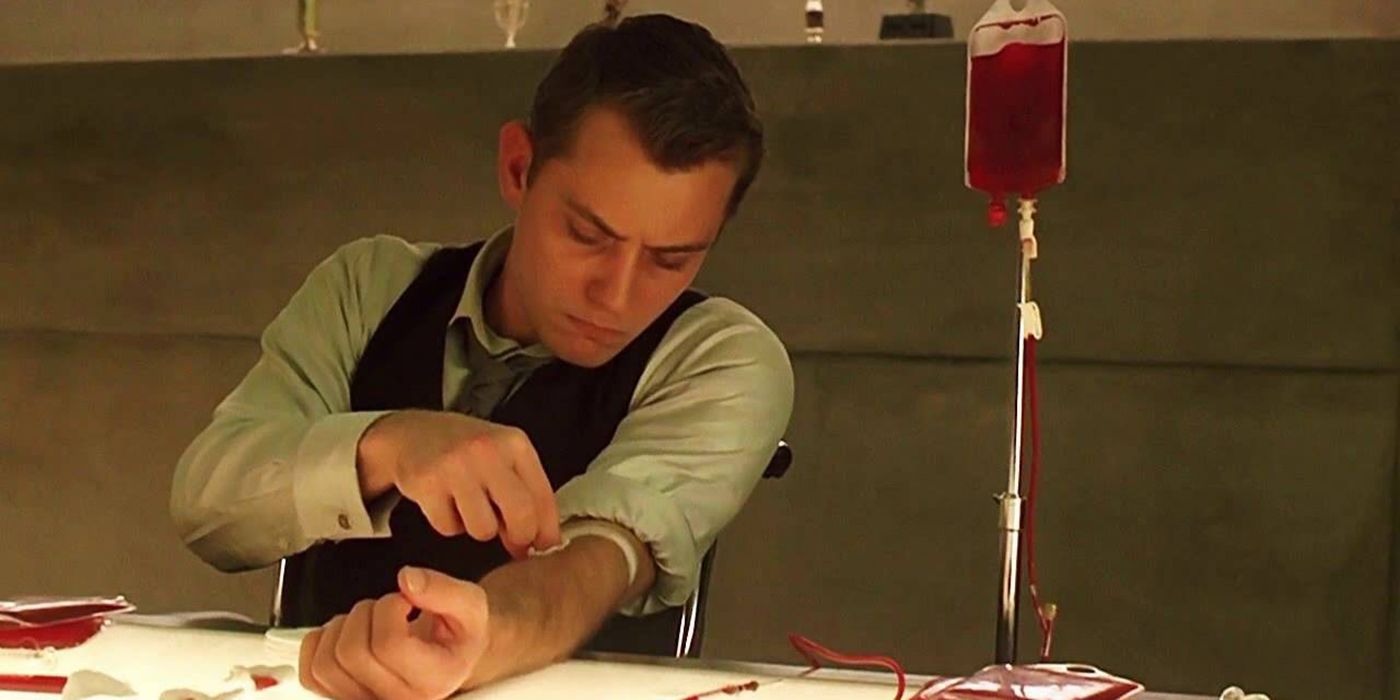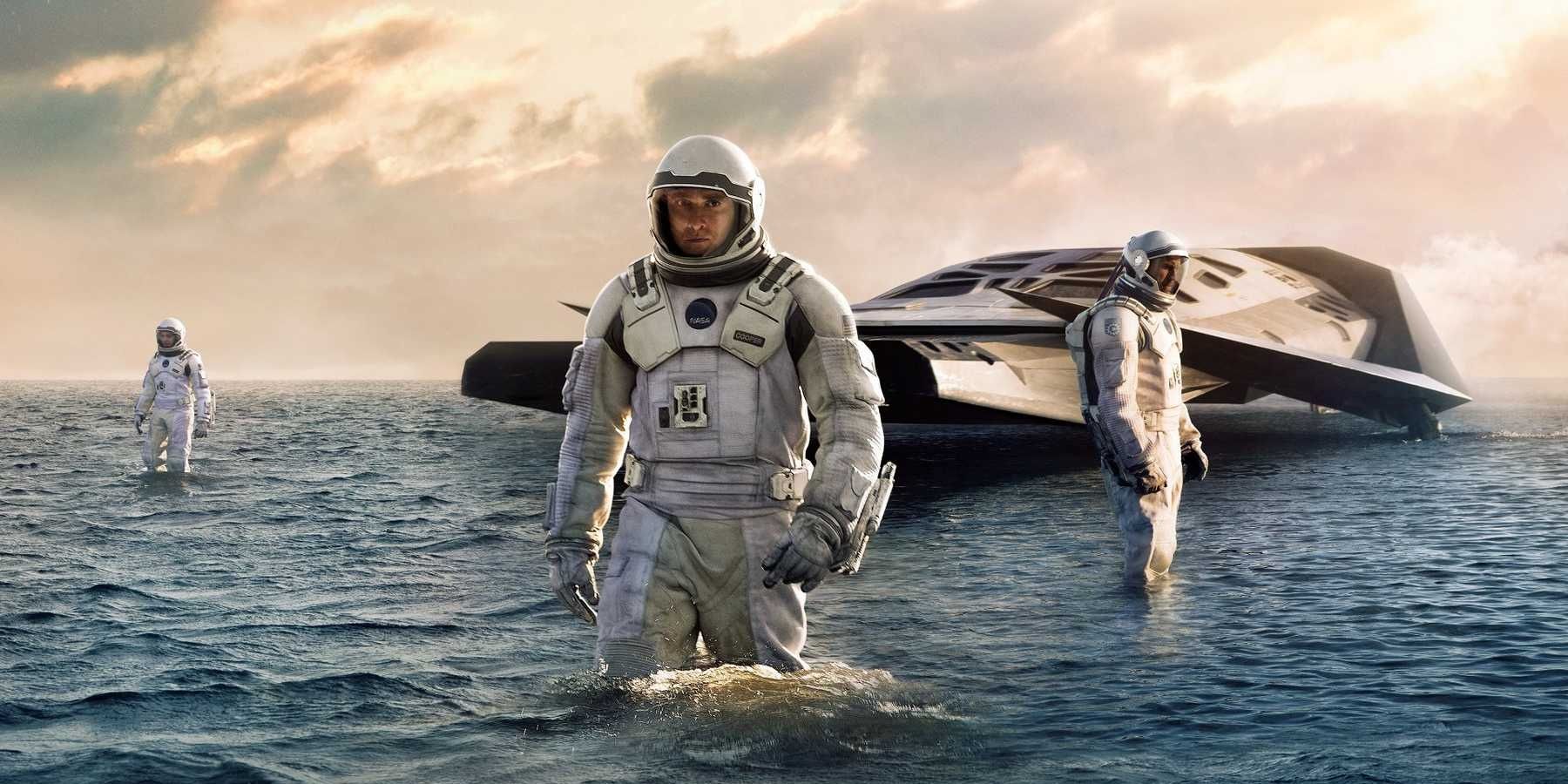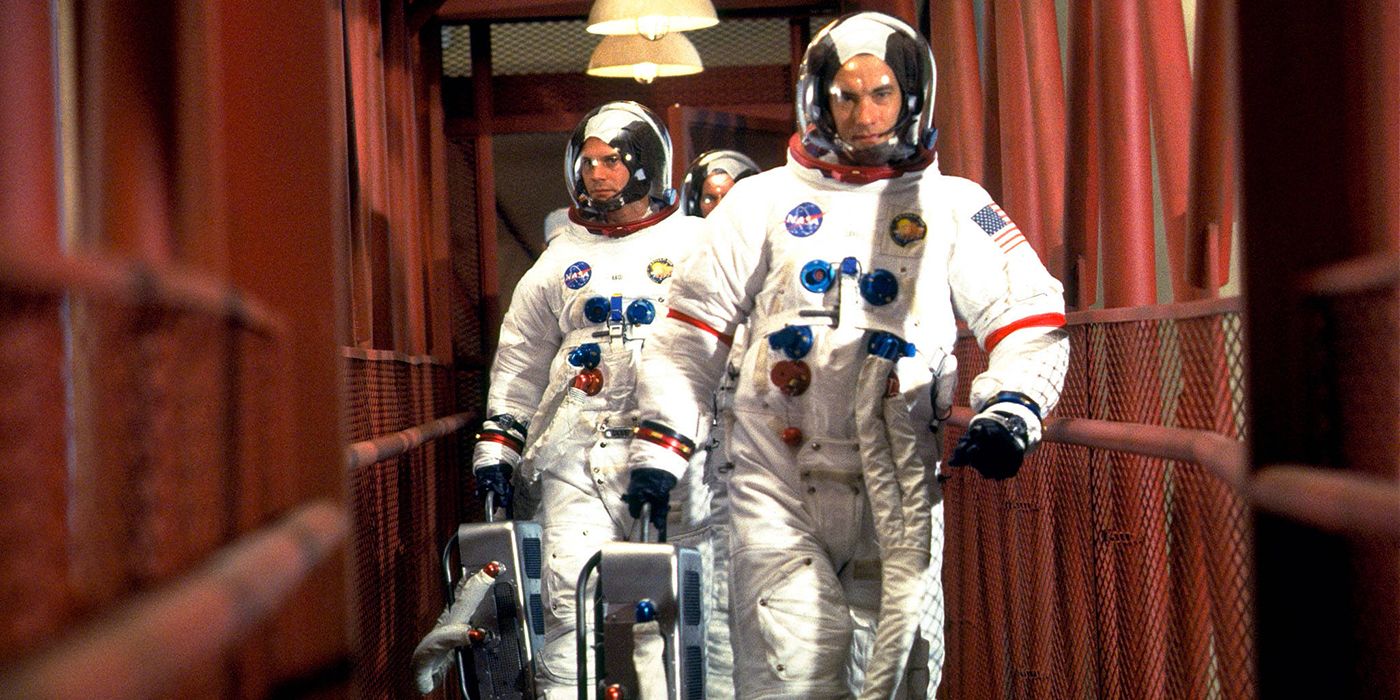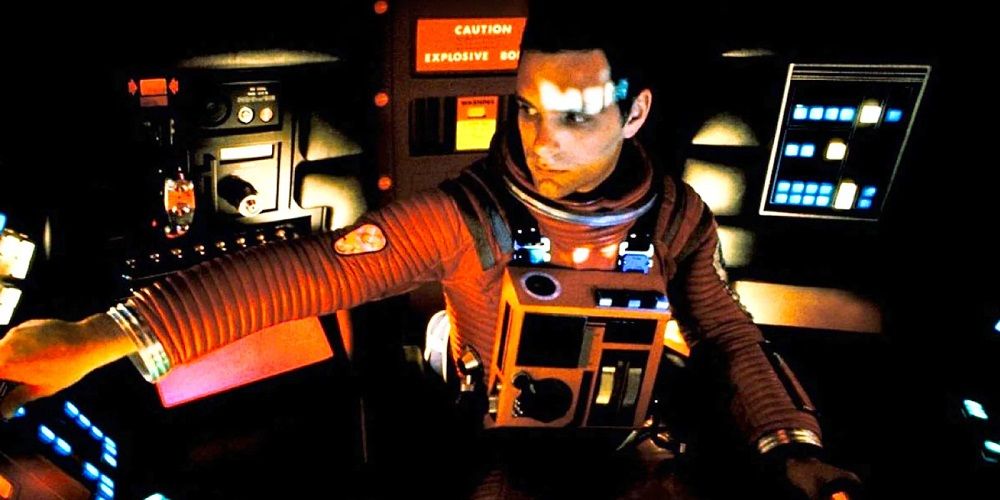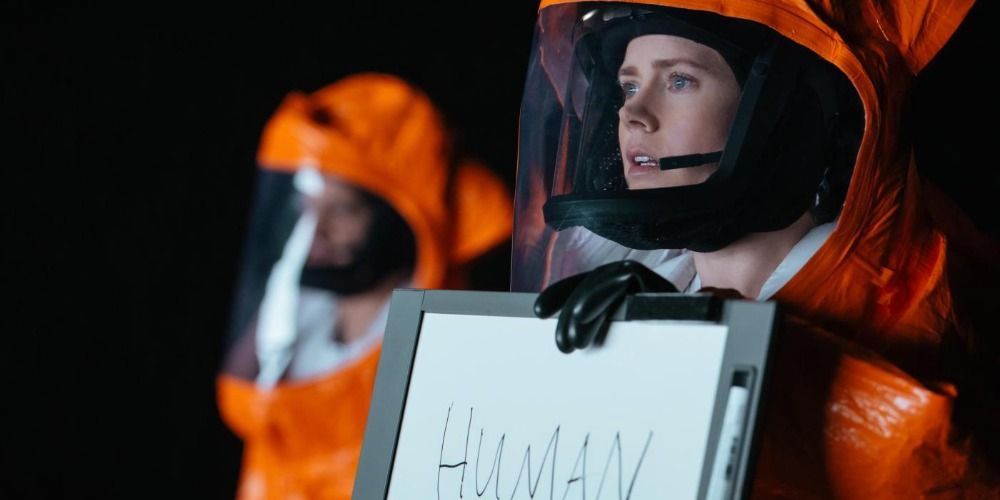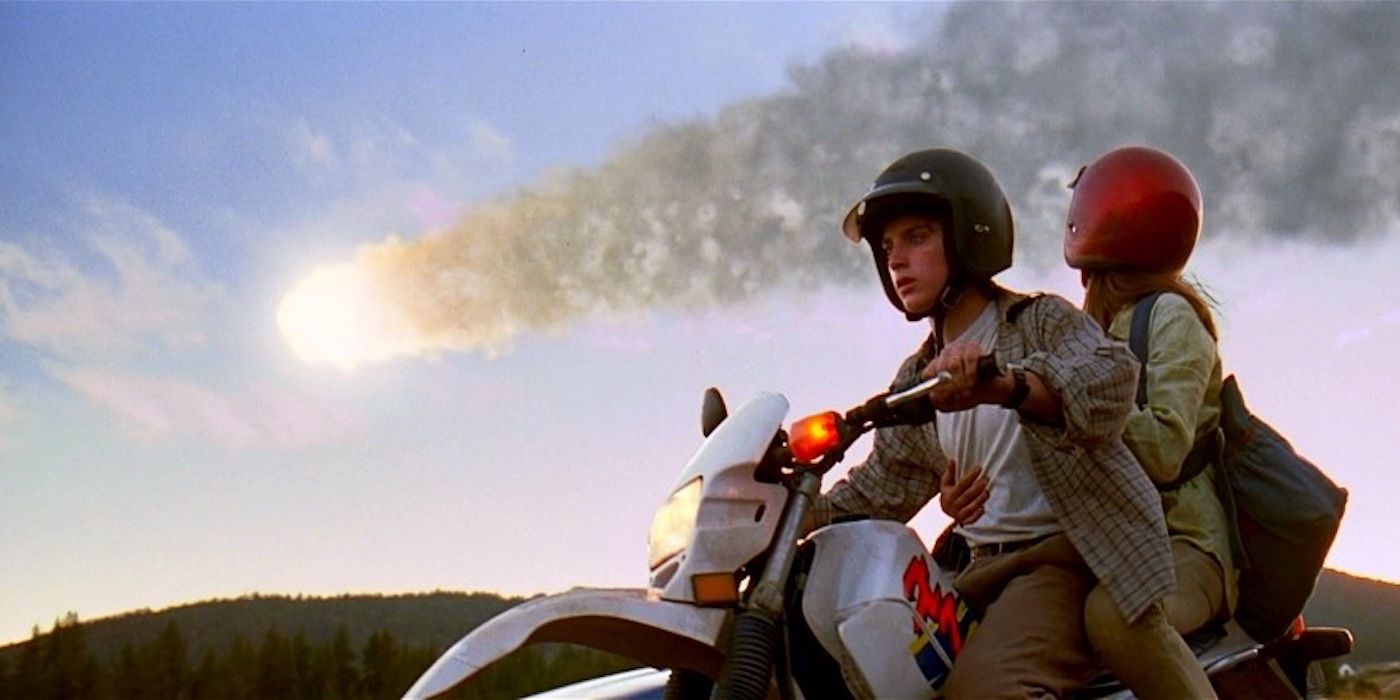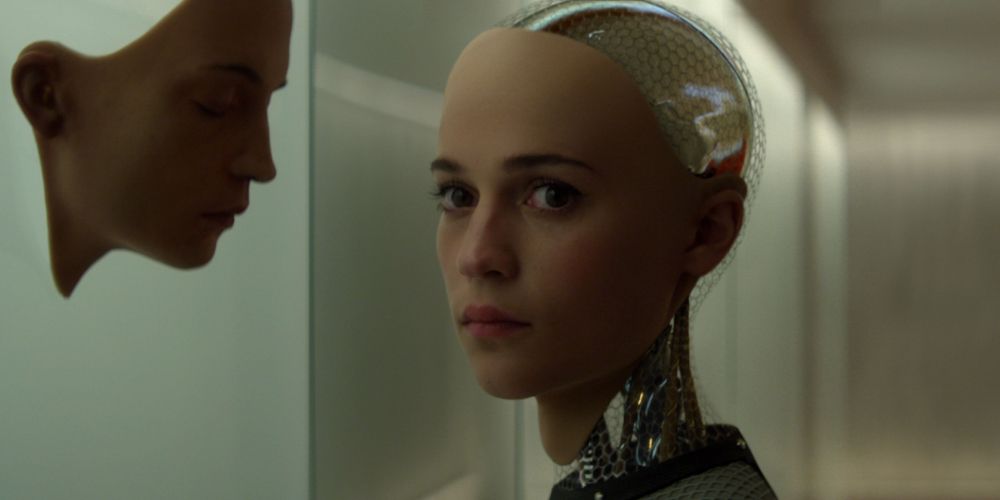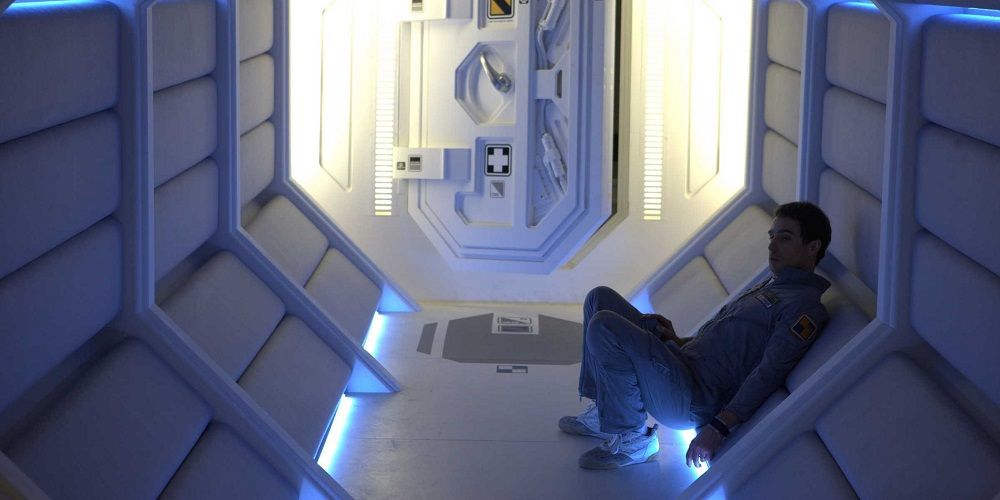When it comes to science fiction and actual science, the two do not always seem to agree with each other; on the contrary, they appear to be at odds quite often. Science fiction authors and directors will take some (probably limited) ideas and advice from real-world science and then they will come up with wild theories and imaginary futures that are not actually backed up by the science that inspired them.
That’s not necessarily negative, though; after all, it is called fiction. However, occasionally, filmmakers will consult actual experts and get so many facts straight as to pleasantly surprise the scientific community and audiences alike.
Updated on November 30th, 2021, by Hannah Saab: There's no shortage of scientifically-accurate movies that have come out in recent years. When thinking about what the most scientifically-accurate movies are, audiences and the scientific community can often make parallels between aspects of the films and the actual science they're based on. Movies like Arrival and Ex Machina have become iconic for the impressive way they portray scientific concepts on the big screen, which is why they deserve to be considered among the most scientifically-accurate movies of all time.
Finding Nemo (2003)
Although it may come as a surprise for fans of the film, the animators and writers for Finding Nemo did a lot of research to present audiences with the scientifically-accurate movie they got to see in 2003. And no, the talking fish and seagulls are not the scientifically accurate part.
The team behind the iconic Pixar movie hired consultants like marine biologists to walk them through designing the sea flora, swimming mechanics, and even the social behaviors of fish. A surprising fact is that tropical fish (e.g., clownfish) occasionally do wind up in Sydney Harbour in the summertime after they are carried away by the East Australian Current.
Her (2013)
While the notion of a self-perceptive A.I. is barely original in the sci-fi zeitgeist, Spike Jonze’s Her is founded on some thoroughly researched theoretical science that could quite possibly come to be a reality at some point this next decade.
Prominent computer expert and futurist Ray Kurzweil commended the picture’s science, maintaining that the idea of a “human and lovable” software program is entirely plausible and not far-fetched; nonetheless, there most likely won’t be a program like Samantha until about 2029. Still, other aspects of Her, such as the cursing computer game character and tiny face cameras might be arriving much earlier than that.
Contact (1997)
Frequently admired as one of the most scientifically-accurate movies ever, Contact was an adaptation of Carl Sagan’s sci-fi novel, the only one of his career. Contact is about the quest for alien signs of life, and what ensues when they are revealed through communication from space.
Radio waves are used, exactly imitating what SETI really does, and the narrative is founded on actual physics or Sagan's views on where actual theories may lead. The extra-terrestrials in Contact commune through mathematics, corresponding to how scientists theorize they likely would.
The Andromeda Strain (1971)
An adaptation of Michael Crichton’s 1969 homonymous novel, The Andromeda Strain observes a group of scientists studying a deadly alien parasite that is unsuspectingly set free in a New Mexico town. While the movie’s story was written off as improbable, under some specific circumstances extra-terrestrial microorganisms could reach Earth and cause humans to fall ill.
If this were the case, organisms would be entirely ill-equipped to repel the bacteria, causing something similar to the film’s depiction. The Andromeda Strain was deemed fear-mongering by some in ‘71 but scientists have confirmed since then that microbes are able to survive in the lethal void of space.
Minority Report (2002)
Grounded on Philip K. Dick’s short story “The Minority Report,” Spielberg’s sci-fi thriller appeared like another run-of-the-mill action backdrop for Tom Cruise preceding its release but subsequently achieved a huge fanbase. Unfolding in 2054 (which appeared extra distant in 2002), Minority Report was aided by Spielberg seeking advice from various experts to shape the movie’s sci-fi future, when law enforcement has the capacity to foresee crimes.
While beta editions of the pre-crime methods are even now assessed in the USA (sounds somewhat frightening), several of the picture’s other technologies are already a reality (e.g., retinal scanners, motion-trailing computer interfaces, and personally targeted advertising).
Gattaca (1997)
Showing an ultramodern civilization in which genetic alterations have been wholly adopted and each embryo is tested for looked-for characteristics, hence producing a “master race” society reminiscent of Nazi Germany, Gattaca has only turned out more alarming as the technology it illustrates has approached reality.
Actually, most of the movie’s genetic testing technologies are now feasible or could be very soon. The “designer babies” procedure, in which parents can choose the sex of the baby and manipulate their genetic code, is becoming more and more prevalent amongst the rich, though the actual procedure is gradually becoming more reasonably priced.
The Martian (2015)
The Martian’s production team aimed for the best possible rate of scientific accuracy, like the novel's author, Andy Weir. The set designer went to the Jet Propulsion Laboratory to study spacesuits and read NASA blueprints. Actors and staff ultimately met with numerous astronauts, observing them and learning the ropes.
NASA has emphasized nine specific actual technologies found in The Martian. These comprise the habitation astronaut Mark Watney stays in, the vegetable garden where he grows potatoes, and the ion impulsion drive he uses. Even the suit he has on (the “Mars-suit”) is unlike the typical one astronauts wear in space because it’s based on notions NASA is working on today.
Interstellar (2014)
Interstellar is famous for being spot-on concerning visuals and CGI. Theoretical physicist Kip Thorne assisted in creating the film’s enormous black hole, Gargantua, where the astronauts travel. The film shows Gargantua in accordance with all known physics’ laws. Gargantua is orbited by a planet, and one would believe it’d be torn to shreds by the immense gravity.
However, Thorne realized that concerning supermassive black holes, it would in fact be conceivable for a planet to endure. The crew and actors also tried to depict the relativistic passage of time, because of the huge gravitational influence of Gargantua. The astronauts who visited planets aged much slower than those who remained on board, which is in fact scientifically correct.
Apollo 13 (1995)
It should be obvious that a movie telling the true story of the canceled Apollo 13 lunar landing would be technically correct; yet, Ron Howard’s 1995 movie should be applauded for putting in the effort to emphasize the mission’s science. Even though it’s a film with Tom Hanks, Kevin Bacon, and Bill Paxton, Apollo 13 nearly has a documentary-like sense, thanks to its legitimacy.
An imperative cause for the film’s accuracy is that the actors went through a vast volume of training (i.e., astronaut training, studying NASA records, even physics 101). The director got the go-ahead to shoot some footage aboard a decreased gravity aircraft, so as to replicate the weightless environment of space.
2001: A Space Odyssey (1968)
One of Stanley Kubrick’s best movies is a pinnacle of sci-fi cinema; also, one of the most scientifically accurate films. Kubrick and co-writer Arthur C. Clarke (author of “The Sentinel,” 2001’s basis) methodically studied the science of space treks and according to SFGATE, the STEM community was pleasantly surprised by 2001: A Space Odyssey’s accuracy upon release.
It gets right particulars that many space films disregard, comprising of real space, the silence, and astronaut food. And even though 52 years have gone by since its release, 2001 still includes one of the most truthful portrayals of A.I.; namely, HAL 9000, whose shift from a friendly to hostile computer is to this day considered utterly plausible and a “cautionary tale” of dealings between humans and A.I.
Arrival (2016)
Arrival is often considered one of Denis Villeneuve's best films and also among his more scientifically-accurate movies. It's not the aliens that are true to science in this case, but their language and the way the linguist Louise attempts to communicate with them.
Not only did they have to write an entirely new alien language for the film, but they also came up with a writing system or script that's completely original to the movie. They consulted several linguists and even a phonetics expert to make sure that the alien language is a legitimate one. The jarringly realistic interactions between the protagonist and the aliens in the film are so impressively haunting precisely because of all the tedious work that went into preparing for those scenes.
Deep Impact (1998)
When renowned astrophysicist Neil deGrasse Tyson says a film has "really good science going there," no one will likely question it. This is exactly what he says in a 2014 interview with BuzzFeed about Deep Impact of all movies.
It may surprise most that the dramatic disaster film is actually a scientifically accurate movie, as Tyson points out that the location of the asteroid's impact is highly plausible and their scenes using grappling hooks out in space are likely what it would look like if astronauts ever had to land on a comet in real life.
Ex Machina (2014)
Ex Machina is one of the most gorgeous sci-fi movies to come out this decade and it also happens to be scientifically accurate. The entire conundrum between the AI Ava, her creator Nathan, and the naive Caleb revolve around an actual concept that has been used in the scientific community since the 1950s – the Turing test.
While the original Turing test was meant to determine if computers pass based on a human's inability to distinguish them from other humans, Ex Machina takes this concept to extreme new heights. Not only is Ava disturbingly able to exhibit human emotions, but she's also capable of being manipulative and cunning. While no computer has passed the Turing test in real life, it's not too difficult to imagine that something like Ava could come along in the near future.
Moon (2009)
The critically-acclaimed sci-fi film, Moon, follows the story of Sam Bell as he struggles during his last days completing his mission on the dark side of the moon. He's been tasked with mining helium-3 for the past three years, which is something that NASA is actually working on and planning to do someday.
The movie impressed the scientific community so much that NASA even screened a copy of the film as part of a lecture series shortly after its release. According to Popular Mechanics, there was a fascinating Q&A afterward where the director and scientists, engineers, and aspiring astronauts discussed several aspects of the film.
Eternal Sunshine Of The Spotless Mind (2004)
Eternal Sunshine of the Spotless Mind is considered a classic at this point, as no one can forget the heartbreaking story of Joel and Clementine and the unique memory-wiping technology by the fictitious Lacuna, Inc. Although no technology like that exists today, the film's interpretation of neuroscientific concepts is surprisingly scientifically accurate.
It particularly excels in showing how memory formation is inextricably linked with highly emotional situations. Even though Joel and Clementine don't recognize each other after the procedure, the emotional memory stored deep in their amygdalas causes a spark of vague recognition thanks to their past emotional experiences with each other. Understanding how these deeper cognitive functions work could very well be the key to creating a similar kind of memory erasure technology in the future.

